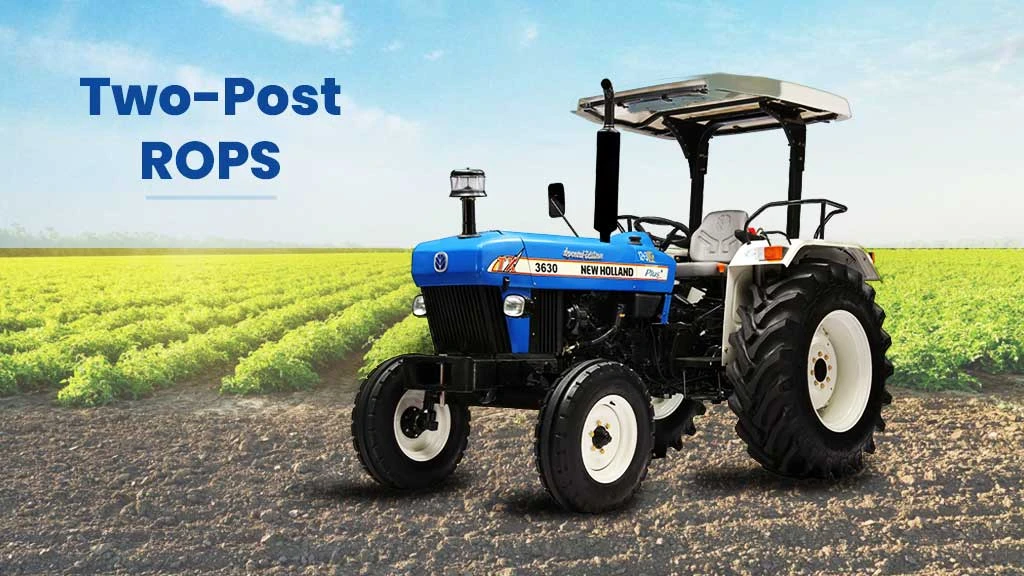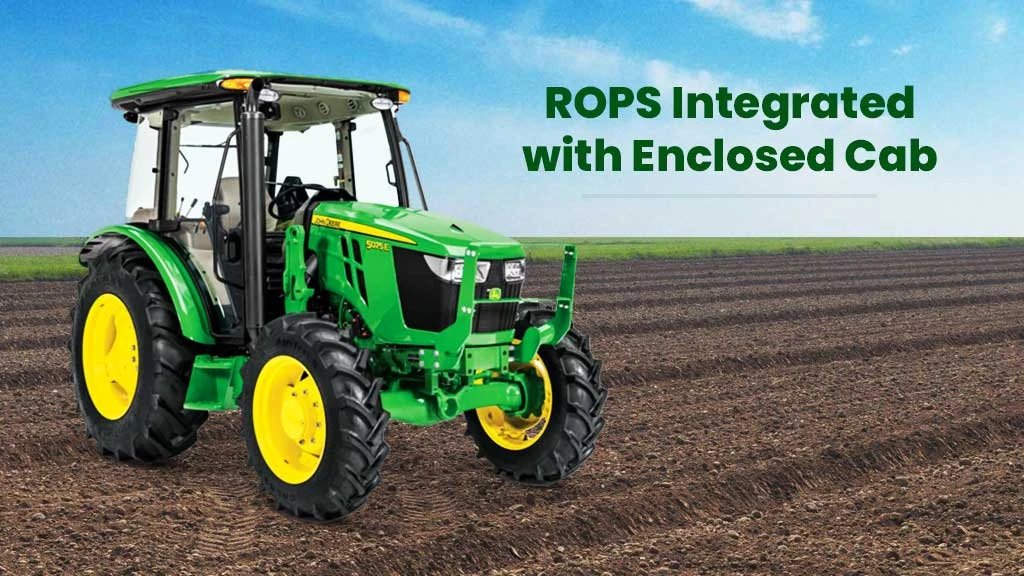Rollover Protection Structure in a Tractor: Types and Benefits

Table of Contents
- Introduction
- Understanding ROPS in a Tractor
- Types of ROPS
- Benefits of ROPS Implementation
- Conclusion
Introduction
Modern agriculture mostly depends on technology to increase efficiency, productivity, and safety. Among the various developments in agricultural machinery, the implementation of Rollover Protection Structures (ROPS) on tractors has significantly contributed to ensuring the safety of farmers and agricultural workers.
ROPS is a critical safety feature designed to prevent accidents and injuries caused by tractor rollovers. So, in this blog, we will discuss the ROPS meaning, explore its different types, and discuss the benefits it brings to the agricultural sector.
Understanding ROPS in a Tractor
A Rollover Protection Structure (ROPS) is a sturdy framework mounted on tractors to provide protection to the operator in case of a rollover accident.
A tractor can overturn if it is operating on steep slopes, tractor turns very fast on turns, power is applied to the rear wheels very quickly, or pulling a load not hitched to the tractor’s drawbar.
ROPS are designed to create a protective zone around the tractor's operator, safeguarding them from being crushed or injured in case the tractor tips over or rolls during operation.
ROPS are generally constructed from robust materials such as steel or aluminium and are meticulously engineered to distribute impact forces and prevent the tractor from collapsing onto the operator.
Types of ROPS
There are three main types of ROPS designs commonly used in tractors:
Two-Post ROPS

This design features two sturdy vertical posts located behind the operator's seat. These posts are attached to the tractor's chassis and extend upwards to form a protective frame.
The space between the posts and the operator's seat allows the operator to enter and exit the tractor safely.
Two-post ROPS are particularly effective in preventing the tractor from falling onto the operator in the case of a rollover.
Four-Post ROPS
This design incorporates two additional horizontal bars that connect the rear posts to the front of the tractor's chassis.
Four-post ROPS provide enhanced protection by creating a fully enclosed protective zone around the operator's seat.
This design is especially effective in situations where the tractor might roll sideways or in more complex rollover scenarios. In India, these types of ROPS are generally not found in the tractors.
ROPS Integrated with Enclosed Cab

Normally, tractor manufacturers equip their vehicles with a ROPS integrated with an enclosed cab. It means that the cab's structure is purposefully designed to serve as a ROPS.
With the rising popularity of tractors equipped with cabs, the prevalence of ROPS coupled with enclosed cabs has also grown.
Benefits of ROPS Implementation
The ROPS tractors come with a plethora of benefits, primarily centred around ensuring the safety and well-being of farmers and workers:
- Operator Safety: ROPS significantly reduces the risk of fatalities and serious injuries in the case of a rollover. The framework absorbs impact forces and prevents the tractor from crushing the operator.
- Reduced Fatalities and Injuries: The implementation of ROPS has led to a substantial decrease in fatal accidents, providing operators with a higher chance of survival in hazardous situations.
- Peace of Mind: Knowing that a protective structure is in place can give operators a sense of security and peace of mind during work. This psychological benefit can positively impact operator confidence, leading to more focused and efficient work practices.
- Legal Compliance and Insurance: In many regions, the installation of ROPS on tractors is mandated by law. Farms and agricultural businesses that comply with these regulations can often benefit from reduced insurance premiums due to their commitment to safety.
- Preservation of Equipment: Rollover accidents not only endanger human lives but also result in significant damage to expensive agricultural equipment. ROPS mitigate the extent of damage during a rollover, potentially saving tractor owners from costly repairs or replacements.
- Long-Term Cost Savings: While the early investment in ROPS installation might seem substantial, the long-term cost savings in terms of reduced medical expenses, legal fees, and equipment repairs make it a sound investment for any farming operation.
- Increased Awareness and Training: The implementation of ROPS often goes hand in hand with safety training and awareness programs. Farmers and operators become more conscious of safe operating practices, leading to a safer work environment overall.
Conclusion
Rollover Protection Structures (ROPS) on tractors are a testament to the continuous evolution of agricultural technology with a strong emphasis on safety. These structures offer a robust defence against the potentially fatal consequences of tractor rollover accidents.
Whether in the form of two-post or four-post designs, ROPS play a crucial role in safeguarding the lives of farmers and workers. It helps reduce injuries and contributes to a more secure and efficient agricultural sector.
As the agricultural industry advances, it is imperative that such safety features continue to be prioritised to create a protected and more productive environment for those who work tirelessly to feed the world.


सम्बंधित ब्लॉग्स















